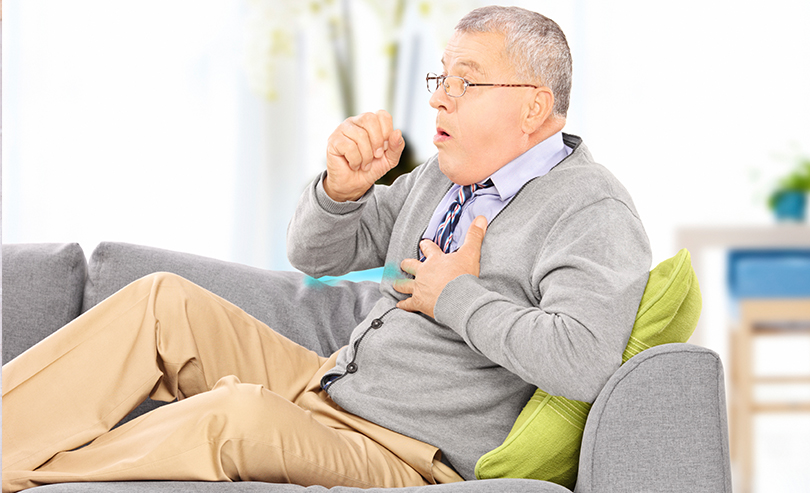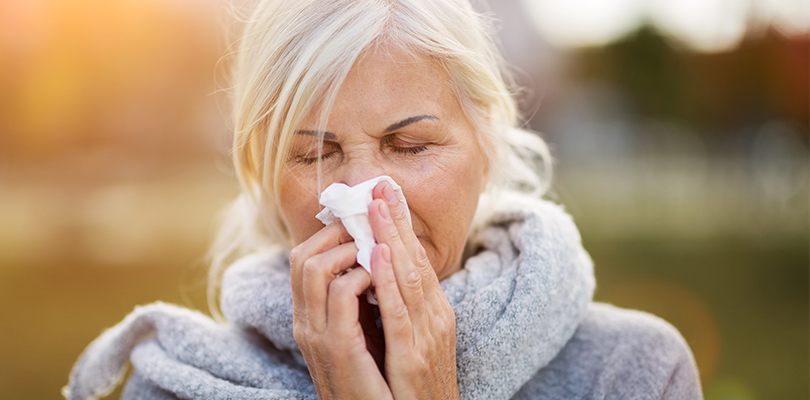What Are the Different Types of COPD?
COPD is the acronym for chronic obstructive pulmonary disease. It is not one disease. Instead, it is the umbrella term for diseases that cause airway obstruction. There are different types of COPD.
Currently, COPD is not curable, but treatment is available that may decrease symptoms and slow the progression. Symptoms of COPD may come and go to varying degrees. Some people always present symptoms to some degree, but others may only have a flare-up of symptoms from time to time.
Symptoms of COPD include the following:
- Shortness of breath
- Coughing
- Fatigue
- Decreased exercise tolerance
According to the Centers for Disease Control and Prevention (CDC), it is estimated that over 15 million people in the U.S. have COPD. More people may have the condition but have not been diagnosed.
Although both men and women get COPD, in the last 20 years, more women have died from COPD than men. The theories on why more women die from the disease are that the condition may affect them differently. They are also often diagnosed at a later stage and treatment may not be as effective.
Types of COPD
There are different types of COPD including, emphysema and chronic bronchitis. Some doctors may also classify asthma as a form of COPD, but it is actually a separate respiratory disease. Below is more information about the types of COPD.
Emphysema
Emphysema leads to damaged air sacs in the lungs called alveoli. When the alveoli become damaged this affects the exchange of oxygen and carbon dioxide within the body.
According to the CDC, in the U.S., cigarette smoking is the primary cause of emphysema. In other countries, poor indoor air quality is also thought to cause emphysema.
Symptoms of emphysema include:
- Decreased oxygen levels
- Wheezing
- Coughing
- Trouble breathing
- Reduced exercise tolerance
- Chest tightness
Chronic Bronchitis
Chronic bronchitis is also a form of COPD. According to the American Lung Association, it is also most often caused by cigarette smoking. Chronic bronchitis is different from acute bronchitis. Although both involve inflammation of the bronchi tubes, acute bronchitis occurs due to an infection and symptoms usually go away in a few weeks.
When the bronchi become inflamed, it also leads to an increase in mucus production. The inflammation and excess mucus make it difficult to breathe.
Symptoms of chronic bronchitis are similar to emphysema and include:
- Coughing
- Excess mucus production
- Shortness of breath
- Fatigue
It is important to understand that some people with COPD have both emphysema and chronic bronchitis. They may have damage to the air sacs in the lungs and also the bronchial tubes.
Chronic obstructive pulmonary disease (COPD) is a serious lung disease that can affect your entire body and quality of life.
Treating Different Types of COPD
The physiology of chronic bronchitis and emphysema are different. Chronic bronchitis affects the bronchial tubes and emphysema affects the air sacs, but the symptoms are the same. Treatment is also the same for both forms of COPD.
Although all forms of COPD are currently not curable, there are several ways to manage the diseases. Whether a person has emphysema or chronic bronchitis, they should take an active role in developing their COPD action plan with their doctor. It is also vital to learn as much as possible about the disease. The more information you have, the better you can manage symptoms.
Treatment for emphysema and chronic bronchitis may vary depending on the severity or stage of the disease, as well as which symptoms are the most bothersome. Treatment for both emphysema and chronic bronchitis includes the following options.
Breathing Treatments
Breathing treatments may include bronchodilators that open the airways. Different classifications of bronchodilators are available to treat emphysema.
Short-acting Bronchodilators
This classification of medication works quickly to relax the muscles around the airways, which leads to dilation. The airways open, which allows you to breathe easier.
Long-acting Bronchodilators
Long-acting bronchodilators also open the airways to make breathing easier, but they take longer to kick in and last longer than short-acting bronchodilators. Since they take longer to work, they are not used to treat sudden symptoms of COPD. Instead, they are taken daily to prevent acute symptoms.
Steroids
Steroids may be inhaled or administered through a pill or intravenously. Since both bronchitis and emphysema cause inflammation, steroids are useful to reduce swelling. Side effects of steroids may include nervousness, trouble sleeping and increased appetite, but inhaled steroids usually have fewer side effects compared to oral or intravenous steroids.
Eliminate Smoking
Smoking cigarettes continues to damage the airways and will increase symptoms of both emphysema and chronic bronchitis. People who have COPD should make it a priority to quit smoking. Talk to your doctor about the ways to help you quit.
Mucus Clearance Devices
Increased mucus production is a symptom of both types of COPD. The mucus may also be thick and sticky, which can make it challenging to get out of the lungs, but it is vital to cough up the mucus to make it easier to breathe and prevent infections, such as pneumonia.
Various mucus clearance devices are available that work similarly. The user exhales into the small handheld device, which delivers vibration to the airways. The vibration helps break up the mucus, so it is easier to cough up.
Oxygen Therapy
Both emphysema and chronic bronchitis can make it difficult to get enough oxygen into the lungs. Oxygen therapy can improve functioning as it increases oxygen levels in the blood.







